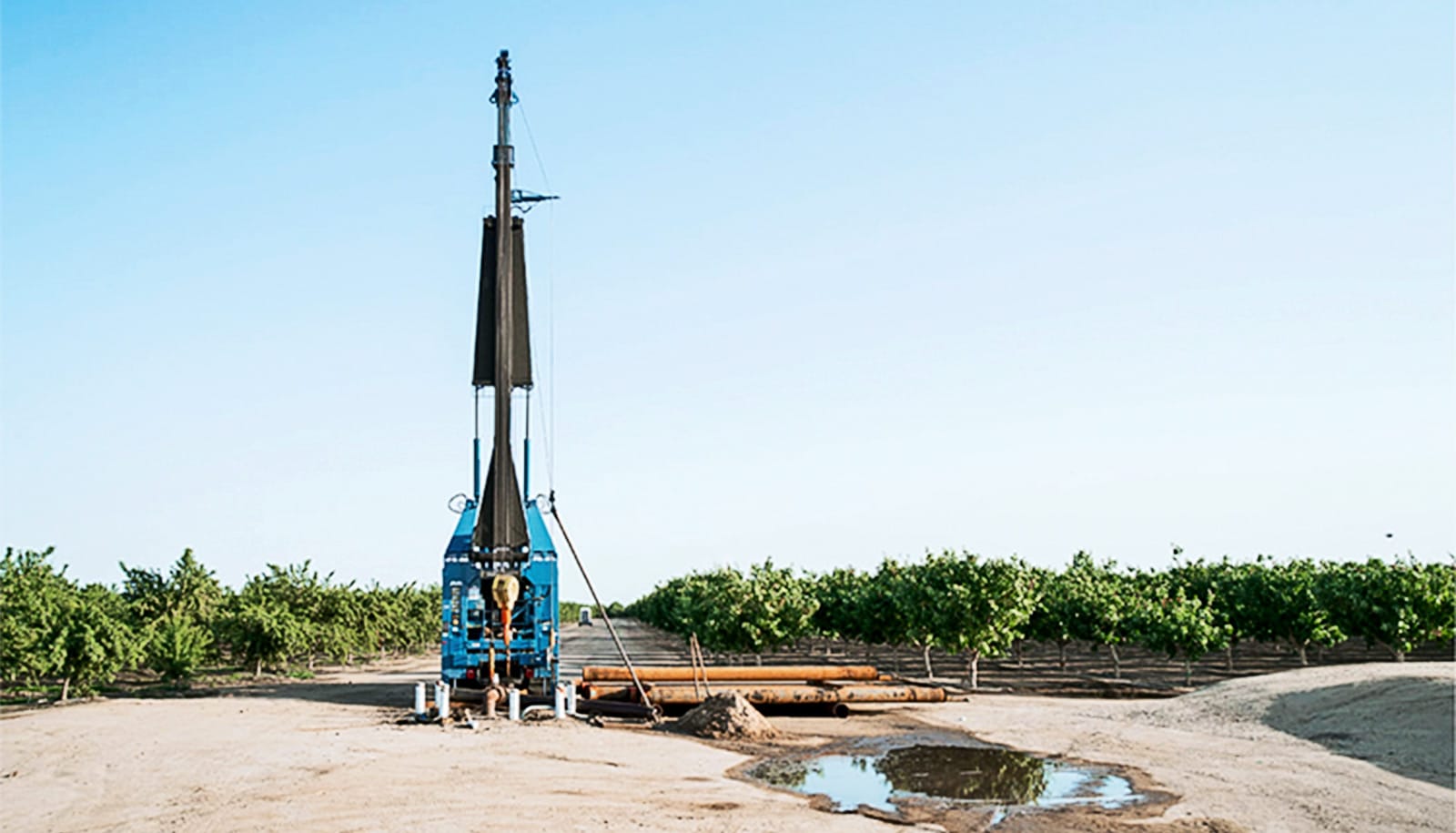People are drilling deeper wells to find water, according to the first comprehensive account of groundwater wells across the contiguous United States.
Groundwater may be out of sight, but for over 100 million Americans who rely on it for their lives and livelihoods it’s anything but out of mind. Unfortunately, wells are going dry and scientists are just beginning to understand the complex landscape of groundwater use.
In the new study, researchers analyzed data from nearly 12 million wells throughout the country in records stretching back decades. Researchers had a number of different questions about groundwater usage they wanted to address. First they set out to determine both where in the country wells are located and what purposes they serve—domestic, industrial, or agricultural. They also wanted to track the depths of wells in different areas and test to see if wells are being drilled deeper over time.
Focusing on regions known to depend on groundwater, such as California’s Central Valley, the researchers collected a wealth of information about different types of wells across the country. Groundwater is generally a matter of state management, so they had to cull their data from a variety of sources.
“[That was] one of the biggest hurdles,” says coauthor Debra Perrone, an assistant professor in the environmental studies department at the University of California, Santa Barbara.
“It took us about four years to collect and quality-assure all these data sources,” adds coauthor Scott Jasechko, an assistant professor based in UC Santa Barbara’s Bren School of Environmental Science & Management.
Groundwater wells running dry
Scientists know that groundwater depletion is causing some wells to run dry. Where conditions are right, drilling new and deeper wells can stave off this issue, for those who can afford it. Indeed, Perrone and Jasechko found that new wells are getting deeper between 1.4 and 9.2 times as often as they are being drilled shallower.
What’s more, the researchers found that 79% of areas they looked at showed well-deepening trends across a window spanning 1950 to 2015. Hotspots of this activity include California’s Central Valley, the High Plains of southwestern Kansas, and the Atlantic Coastal Plain, among other regions.
“We were surprised how widespread deeper well drilling is,” Jasechko says. News media had documented the trend in places like the Central Valley, but it is pervasive in many other parts of the country as well. This includes places like Iowa, where groundwater hasn’t been studied as intensively, he notes.
The reasons for drilling deeper vary, according to Perrone. For instance, people drill deeper to avoid contamination seeping into aquifers from the surface, or to access aquifers that have less stringent withdrawal regulations, she explains. Some people may drill deeper to source more water.
“What we’re finding is that in places where water levels are declining, some people are drilling deeper, maybe to avoid having their primary water supply go dry,” Perrone says. “Regardless of the reasons why Americans are drilling deeper, we suggest that deeper well drilling is an unsustainable stopgap to groundwater depletion.”
4 reasons for deeper wells
Four major factors explain why deeper drilling won’t solve water woes indefinitely. For starters, it costs more, and it requires more energy to pump water from deep underground compared to water closer to the surface.
Geology presents another challenge: Deeper strata are generally less conducive to groundwater extraction. And finally, groundwater tends to get saltier at depth, so at a certain point it becomes unusable if not treated. As a result, in many regions there’s a floor to how deep we can productively drill for water.
This issue hits rural communities particularly hard. “Groundwater is a crucial resource for rural communities,” Perrone says. “Our previous work found that rural groundwater wells are especially vulnerable to going dry.”
What’s more, these communities often have less capacity to update their groundwater infrastructure. Groundwater is also important to the agricultural sector, which often relies on it for irrigation, especially during droughts, she adds.
Deliberate groundwater governance and management have emerged as active areas in addressing this challenge. The idea is to become more conscientious about how people use groundwater and to regulate and monitor the practices more effectively. Additional research is underway on managed aquifer recharge, namely encouraging water to percolate back underground. This could be normal surface water, flood water, or treated water. And particularly dry areas are considering whether to increase their use of recycled water.
The new paper provides additional context to one of Perrone and Jasechko’s past studies where they found that the United States may have less usable groundwater than previously thought. It also ties into Perrone’s work regarding groundwater policy across the US. In the future, she plans to look at the legal frameworks surrounding groundwater use.
“My goal is to understand what types of laws are being passed in the western 17 states to manage groundwater withdrawals in more sustainable ways,” she says.
Their findings appear in the journal Nature Sustainability.
Source: UC Santa Barbara



